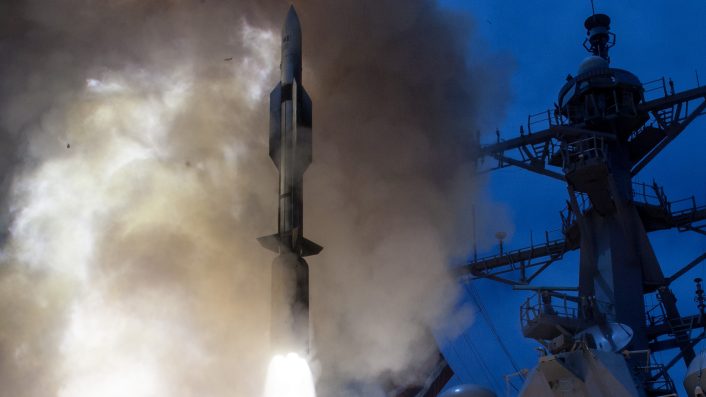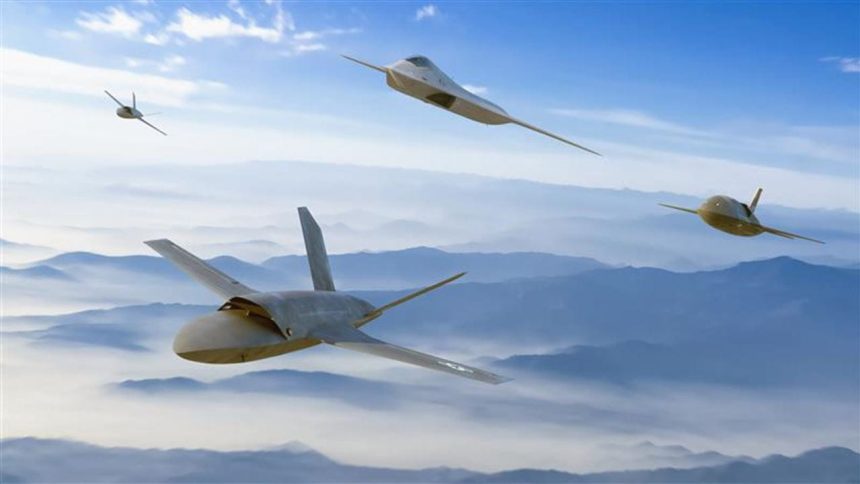The two announcements highlight RTX’s parallel work on both air-breathing and solid rocket propulsion technologies through its businesses.
RTX made two propulsion announcements on Sept. 24, 2025, highlighting the company’s involvement in both air-breathing and rocket technologies through its businesses. Pratt & Whitney revealed that it has completed critical tests on its small turbofan engine family, while Raytheon announced the acceleration of the Mk 104 dual-thrust rocket motor’s production.
Pratt & Whitney Unlocks More Thrust for Collaborative Combat Aircraft
Pratt & Whitney completed a series of critical tests on its family of small turbofan engines, which are intended for use on Collaborative Combat Aircraft (CCA). Some of the small turbofans produced by the company are already used for munitions and decoys, and this testing could open new possibilities.
“For unmanned applications, our commercial-off-the-shelf engines can offer an up to 20% increase in their qualified thrust capability,” said Jill Albertelli, president of Pratt & Whitney’s Military Engines business. “This means that we can deliver increased performance from these production engines. Ultimately, this will allow for reduced cost and weight for multiple applications.”

With CCAs intended to provide the U.S. Air Force with “affordable combat mass,” having an affordable yet capable propulsion option is critical. The engines used by the first two CCAs selected by the service, the YFQ-42 and YFQ-44, have not been disclosed, however the Pratt & Whitney PW300 and PW500 engines are among the rumored candidates, together with the Williams FJ44.
The company is now conducting a second round of tests monitoring inlet airflow and pressure variations for engines embedded within the aircraft. As performance can be impacted if airflow to the engine is interrupted or blocked, the tests are intentionally distorting airflow around the flight envelope.
By doing so, the company is developing a predictive model of engine performance across the flight envelope. These tests, combined with digital twin simulations, allow engineers to reduce integration risk and ensure reliable operation when embedded into future CCA designs.
Raytheon and Avio USA Accelerate Mk 104 Rocket Motor Development
On the same day as Pratt & Whitney’s announcement, Raytheon revealed an expansion of its collaboration with Avio USA to expand production capacity for the Mk 104 dual-thrust rocket motor, 13 months after the two businesses signed a contract for preliminary engineering work on the Mk 104. A purchase order worth up to $26 million will fund continued engineering work through the Critical Design Review (CDR) phase, procurement of long-lead materials, and preparations for full qualification.

The Mk 104 motor is a core component of Raytheon’s Standard Missile franchise, used by the U.S. Navy and allied fleets worldwide. Ensuring reliable and scalable production of the motor is therefore a priority for sustaining missile availability, especially following the renewed focus on air defense munitions.
“This purchase order represents an important step in expanding our supply chain to ensure the resilience and availability of the Mk 104 rocket motor,” said Barbara Borgonovi, president of Naval Power at Raytheon. “By strategically implementing second sourcing for critical materials, we are not only enhancing our ability to meet customer demand but also strengthening our production capacity for the Standard Missile franchise.”
Avio USA, supported by Italian parent company Avio SpA, is contributing expertise in SRM engineering, material characterization, laboratory and fire testing, and integration, according to Giulio Ranzo, CEO of Avio SpA. “We are proud to continue our work on Mk 104, which is so critical to the United States and our allies,” said VADM (Ret.) James Syring, CEO of Avio USA.
According to Defense News, Avio will starting on the Mk 104 at its site in Colleferro, Italy, while working on opening a U.S. production site. Ranzo further said to the publication that the manufacture would start within 18 months to qualify as a second source.









